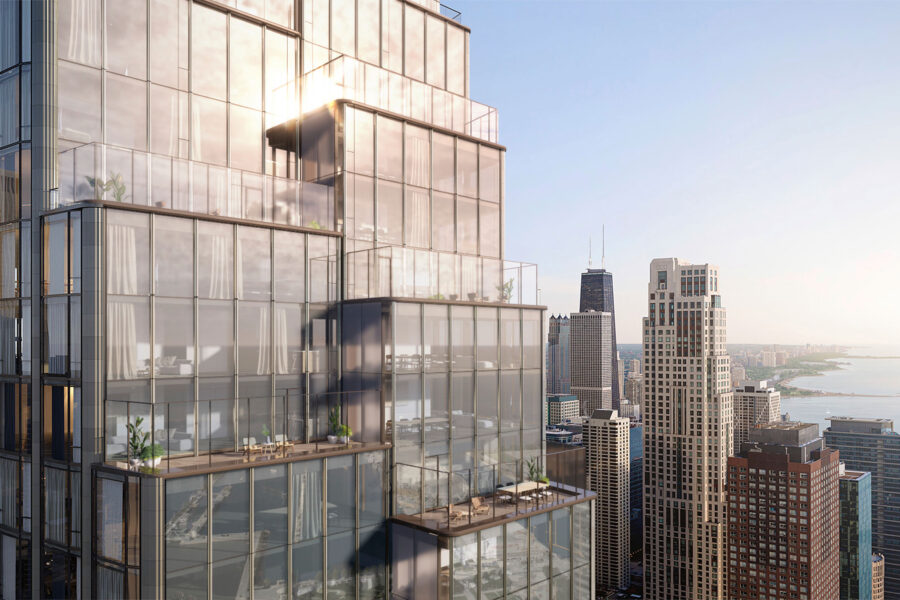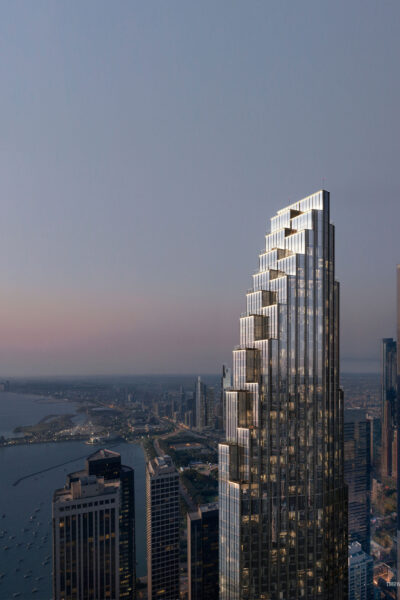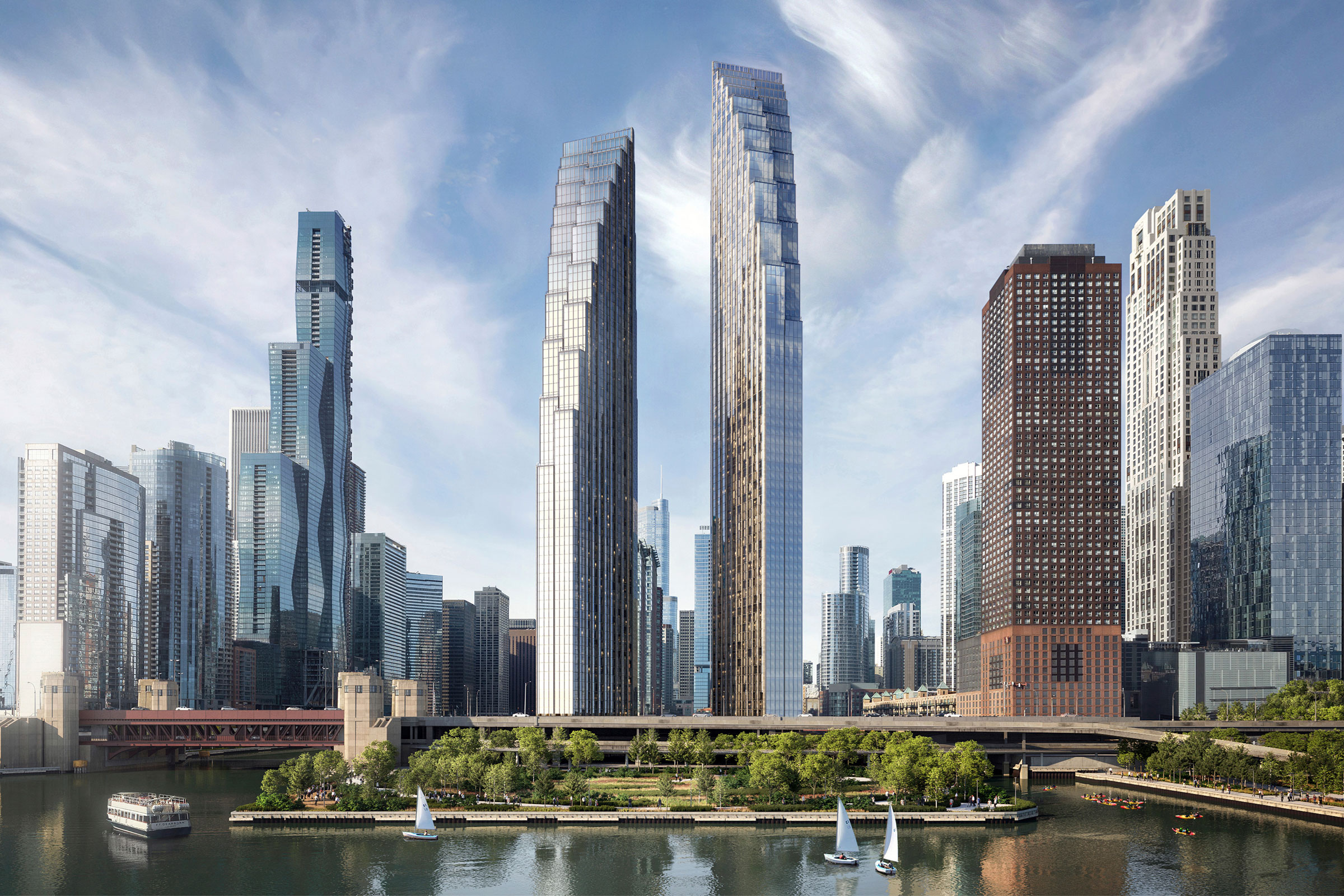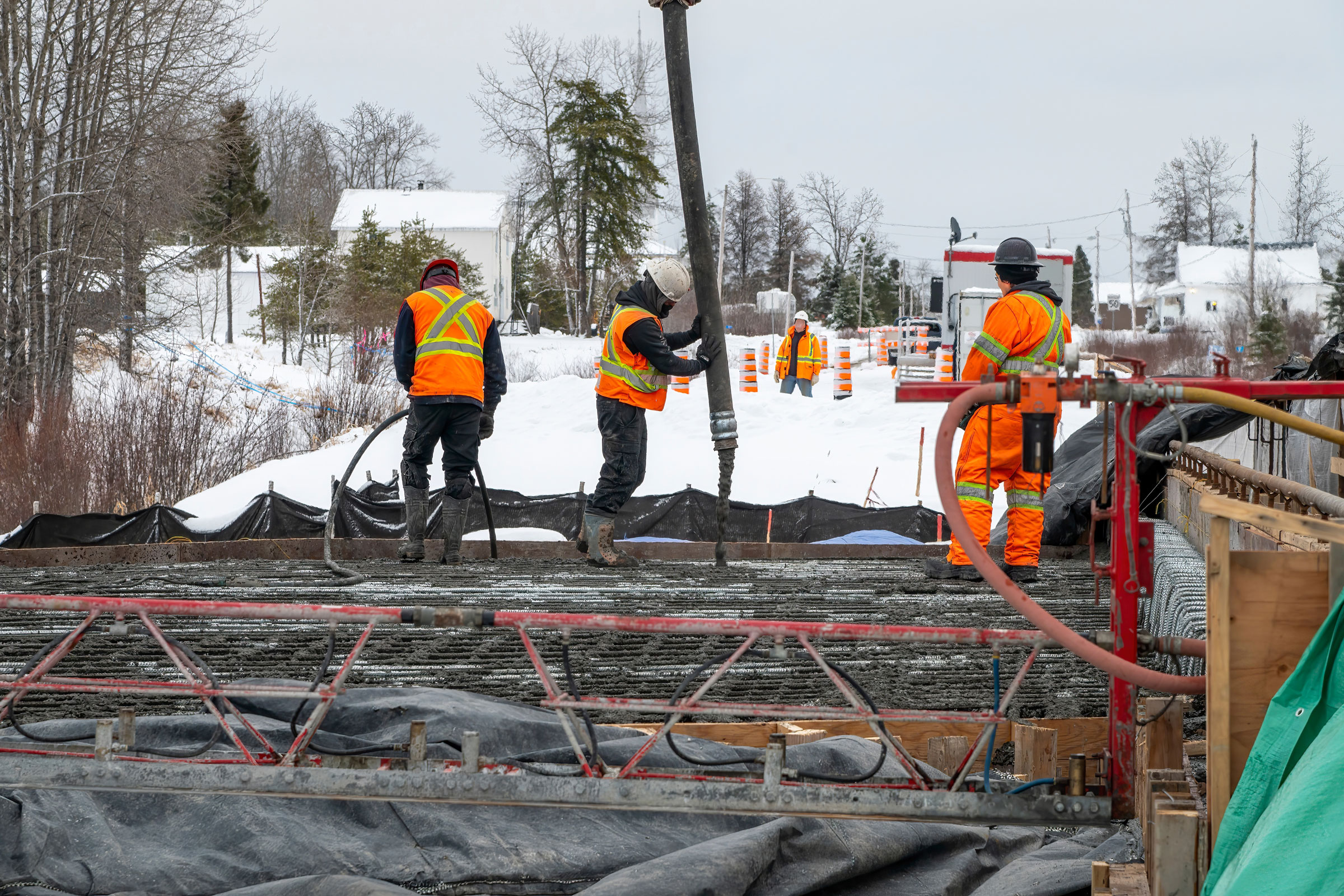Story at a glance:
- 400 Lake Shore is officially under construction with the first concrete poured on the former site of the Chicago Spire.
- The 72-story, 841-foot building is one of two planned for the site.
- The SOM-designed project is set to house more than 500 residential units, more than 100 of them affordable housing.
What was once a giant hole in the ground in the middle of the Chicago skyline is now on its way to becoming something real—and while not as tall as what was originally planned for that site, the final design may be more momentous because it’s meant to last.
“We inherited an amazing project and site. There was a lot of pressure, just given the history. It was a beautiful building that Santiago Calatrava designed, and it would have been fantastic, but it didn’t pencil out,” says Scott Duncan, partner at Skidmore, Owings & Merrill (SOM), who is designing 400 Lake Shore, developed by Related Midwest, on the former site of the Chicago Spire. “Related took over the site and, through a process, engaged with us. We quickly came to the conclusion that two buildings were better than one—and not quite as tall.”
SOM’s 72-story, 841-foot building—one of two buildings drawn up for the site—is set to house more than 500 residential units, more than 100 of them affordable housing. The first bit of concrete was finally poured in spring 2024—eight years after SOM started working on 400 Lake Shore. It was the first project SOM took on when Duncan moved from New York to Chicago. “It was hugely exciting for me,” he says.
The Chicago Spire was planned to be 2,000 feet tall and was partially built in 2007 and 2008 before construction was canceled; it was simply inefficient. 400 Lake Shore is planned to be under 900 feet. “This neighborhood of 800-ish feet is a sweet spot for structural efficiency,” Duncan says. “That’s one of the reasons you see a lot of buildings hover around that height.”
Ultimately a big gaping hole was left behind by the Spire and, years later, SOM was tasked to fill it. “We had to position and design the footprint of the tower so that it sat on what was a pretty crazy circular foundation—the hole you may have seen down there. It was quite literally a square-shaped peg in a round hole.”

The project reimagines the classic “Chicago window”—a hallmark of the city’s historic architecture—as a shallow bay of floor-to-ceiling glass, with metal detailing inspired by Lake Michigan. Rendering courtesy of SOM, Related Midwest
At the confluence of Lake Michigan and the Chicago River, 400 Lake Shore will be an example of flexible design, as the two towers are not designed in such a way that they have to be perfect mirror images. “They are like sister buildings, not twins,” Duncan says. “We’re building the first one now, and the sister building will come later.”
This design allows for more flexibility in many ways, continuing inside the building, as the walls can essentially go anywhere. “In our design, because of the bay window facade design and because of this grid we’ve created, we laid out all of the units in a way that was flexible but still had an alignment between the architectural expression, the structure, and these interior partitions,” Duncan says.
It’s a very structurally efficient and cost-efficient way to achieve what I think is a pretty dynamic form.
The project’s apparent curved profile is actually a strategic stepping of that column grid, Duncan says. “Every time you see a step it’s where the column grid has changed or has a natural break in it. It’s a very structurally efficient and cost-efficient way to achieve what I think is a pretty dynamic form, as opposed to curving the building and making every single unit layout unique, which creates a lot of headaches for construction, leasing, and so on. This is on a module.”
He says some have joked S-O-M means stay on module. “This could suggest that we’re overly rigid, but I think what it speaks to is the desire to achieve a deep understanding of the systems we’re working with and then working within that system.”

Rendering courtesy of SOM, Related Midwest
Its stepped profile also makes the building friendlier to birds, something that’s personally important to Duncan and a hot topic in Chicago lately. “We need to prevent the interruption of bird migration paths. We see what happens if we don’t,” says Duncan, who adds that SOM consulted an ornithologist during the design process. “Because the facade at 400 has a stepped profile, it’s almost like a corduroy fabric or some kind of articulated surface. There aren’t broad expanses of glass that confuse birds.”
The idea of pushing the structure into the glassy exterior wall plane also means there are enough elements in the facade so the birds can orient themselves properly while flying. The project reimagines the classic “Chicago bay window”—a design that is a hallmark of the city’s historic architecture—as a shallow bay of floor-to-ceiling glass, with ornamental metal detailing inspired by the rippling surface of Lake Michigan. The design also creates a better insulated facade than a normal glass facade.
While the narrower east and west sides of the building are more glassy, the north and south have a mix of solid and glazed elements. “That has a huge benefit on opacity in the building and energy performance in the building,” Duncan says. “It’s about a 40% improvement over an all-glass facade. It’s like the difference between wearing a windbreaker and a puffer jacket.”
Ultimately a plaza between the two towers will also feature in-demand amenities like public art and spaces for residents and guests within a two-story podium. 400 Lake Shore will connect to the north edge of Chicago’s Riverwalk, with open spaces and pedestrian routes connecting to the planned DuSable Park.
Project Details
Project: 400 Lake Shore
Location: Chicago
Completion: Anticipated 2027 (Tower 1)
Net Site Area: 95,000 square feet
Design Architect: Skidmore, Owings & Merrill (SOM)
Architect of Record: Stantec
Interior Design: MAWD
Developer: Related Midwest
Structural Engineer: SOM
Civil Engineer: Spaceco
MEP & Fire Protection: Salas O’Brien Engineers




